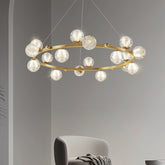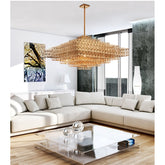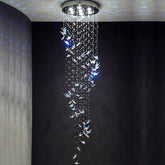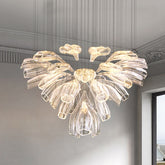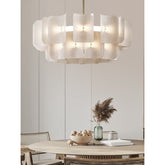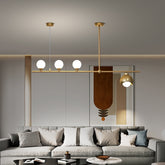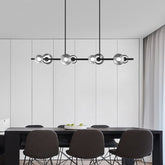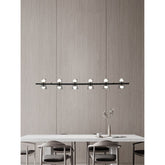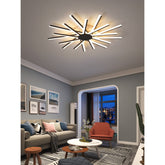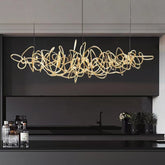Illuminating Life: The Significance of Buying Lamps
In the vast tapestry of life, there exists a fundamental element that often goes unnoticed, yet its impact is profound. It has the power to transform moods, inspire creativity, and shape our perception of the world. This often-overlooked element is light – an ethereal force that illuminates our surroundings and shapes our experiences. As we delve into the significance of buying lamps, we uncover the transformative power of light and its ability to bring brilliance into our lives.
Yes, lamps may seem like mundane household fixtures, but their importance extends far beyond mere functionality. The act of choosing the right lamp goes beyond mere aesthetics; it is a conscious decision that can profoundly impact our well-being. It is through the right light that we can create an environment that nurtures our mind, body, and soul. The significance of buying lamps lies in the understanding that light is not just an accessory, but a key player in shaping our daily experiences.
To fully appreciate the significance of buying lamps, we must acknowledge the interconnectedness between our environment, nature, nurture, and the impact of light on individuals. Humans, as products of both nature and nurture, are deeply influenced by the world around them. The quality of light in our surroundings can have a profound impact on our emotions, cognitive abilities, and overall well-being.
To put it in a different way, just as sunlight nourishes plants and shapes their growth, the right lighting conditions can nurture our own personal development. Scientific research has shown that exposure to certain types of light can affect our circadian rhythm, regulate our sleep patterns, and even influence our hormonal balance. The environment we create through lighting choices has the power to uplift our spirits, improve our focus, and promote a sense of calmness.
As we embark on this exploration of the significance of buying lamps, we will delve deeper into the interplay between nature and nurture, explore the butterfly effects of lighting choices, and unveil the philosophical ideals that guide our selection process. Join us on this illuminating journey as we discover how the right light product can create a profound impact on our lives, accentuating the brilliance of our life.
The Environmental Impact of Light Products
While we have explored the personal significance of buying lamps, it is essential to consider the broader impact of our lighting choices on the environment. The production, use, and disposal of light products have far-reaching consequences that extend beyond our immediate surroundings. By understanding the environmental implications, we can make informed decisions that align with our values of sustainability and conservation.
The manufacturing process of traditional light bulbs often involves the extraction of finite resources and the release of greenhouse gases. Additionally, these bulbs consume significant amounts of energy, contributing to carbon emissions and climate change. Moreover, their disposal poses a challenge as they contain harmful substances like mercury, which can contaminate soil and water if not handled properly.
Thankfully, there has been a remarkable shift towards energy-efficient and sustainable lighting options in recent years. LED (Light Emitting Diode) bulbs, for instance, are revolutionizing the lighting industry. They consume up to 80% less energy than traditional incandescent bulbs, making them not only environmentally friendly but also cost-effective in the long run. LED bulbs also have a significantly longer lifespan, reducing the frequency of replacements and further decreasing waste.
In addition to LED bulbs, other sustainable lighting solutions such as compact fluorescent lamps (CFLs) and halogen incandescent bulbs are gaining popularity. These alternatives offer improved energy efficiency, longer lifespans, and reduced environmental impact compared to traditional incandescent bulbs.
As responsible consumers, we have the power to make conscious choices that minimize our ecological footprint. When it comes to buying lamps and light products, we can make a significant impact by opting for energy-efficient and sustainable options. By choosing LED bulbs or other environmentally friendly alternatives, we not only reduce our energy consumption but also contribute to mitigating climate change.
Furthermore, it is crucial to consider the durability and lifespan of light products when making purchasing decisions. Investing in high-quality, long-lasting lamps ensures that they serve us for an extended period, reducing the need for replacements and minimizing waste generation.
To take our commitment to sustainability a step further, we can also explore options for recycling or proper disposal of old or non-functional light products. Many communities and organizations offer recycling programs specifically designed for light bulbs and lamps, ensuring that they are handled in an environmentally responsible manner.
By being mindful of the environmental implications of our lighting choices and opting for energy-efficient, sustainable products, we become agents of change in preserving our planet's resources. Together, we can make a tangible difference and inspire others to follow suit.
The Butterfly Effects of Lighting Choices
The concept of the butterfly effect, derived from chaos theory, proposes that small changes in initial conditions can result in significant and unpredictable outcomes in complex systems. This idea suggests that even the most seemingly insignificant choices we make can have far-reaching consequences. When it comes to lighting decisions, the butterfly effect reminds us that small changes in our choices can lead to profound effects on our well-being and the environment.
Lighting choices have the potential to create a ripple effect, influencing our mood, productivity, and overall quality of life. Just as a butterfly's fluttering wings can set off a chain of events, the small adjustments we make to our lighting environment can produce tangible effects.
Consider the impact of natural light versus artificial light on our well-being. Exposure to natural light, with its dynamic qualities and full spectrum of colors, has been linked to improved mood, increased productivity, and enhanced cognitive performance. On the other hand, inadequate or harsh artificial lighting can lead to feelings of discomfort, eyestrain, and decreased concentration.
By consciously choosing the right light product, we can create an atmosphere that uplifts our spirits, boosts our energy, and enhances our overall well-being. The gentle glow of warm, inviting light can create a sense of coziness and relaxation, fostering a positive mood and reducing stress. Meanwhile, bright, focused lighting can promote alertness and productivity, enabling us to accomplish tasks efficiently.
The butterfly effects of lighting choices can manifest in numerous positive ways. Here are a few examples:
Enhanced creativity: By selecting lighting that stimulates inspiration and creativity, such as adjustable task lighting or natural light simulation, individuals may find themselves more inclined to engage in artistic pursuits. The right lighting can ignite imagination and provide the optimal environment for creative thinking and expression.
Improved sleep quality: The choices we make in our lighting environment can significantly impact our sleep quality. By incorporating dimmer, warmer lighting in the evening and avoiding exposure to bright, blue-rich light before bed, we can promote the natural sleep-wake cycle, ensuring restful and rejuvenating sleep.
Energy conservation: Choosing energy-efficient lighting options, such as LED bulbs, not only reduces energy consumption but also contributes to broader environmental conservation efforts. The cumulative effect of numerous individuals opting for energy-efficient lighting can lead to significant reductions in carbon emissions and resource depletion.
Positive social interactions: The right lighting can create a welcoming and inviting atmosphere, encouraging social interactions and fostering a sense of connection. Warm, diffused lighting in communal areas, such as living rooms or dining spaces, can promote relaxed conversations and a convivial atmosphere.
Ecological impact: Opting for sustainable lighting options can have a positive butterfly effect on the environment. By selecting products made from eco-friendly materials, choosing energy-efficient technologies, and properly disposing of old light products, we contribute to reducing waste, conserving resources, and protecting ecosystems.
These examples illustrate the transformative power of lighting choices. By understanding the potential butterfly effects, we can make intentional decisions that have a positive impact on our lives and the world around us.
By recognizing the power of small changes in lighting decisions, we can craft spaces that uplift our spirits, enhance our productivity, and promote a sustainable future. Let us embrace the butterfly effects of lighting, making conscious choices that illuminate our lives and create a positive impact that extends far beyond the flicker of a switch.
Choosing the Right Light Product: A Path to Expressive Illumination
Every individual is unique, with distinct needs, preferences, and desired experiences. Recognizing this diversity is essential when it comes to choosing the right light product. Lighting is not a one-size-fits-all concept; it is a deeply personal and subjective choice that can profoundly impact our daily lives.
By selecting light products based on our individual needs, we can create environments that cater to our specific requirements. For example, individuals who work from home may prioritize task lighting that provides optimal illumination for concentration and productivity. Others may seek ambient lighting options that create a cozy, inviting atmosphere for relaxation and socializing.
Considering factors such as brightness, color temperature, and lighting control options allows us to tailor our lighting choices to our preferences, enhancing our overall satisfaction and well-being.
The impact of different lighting options on creativity, focus, and ambiance
Lighting has a remarkable influence on various aspects of our lives, including creativity, focus, and ambiance. Different lighting options can evoke specific emotions, enhance cognitive performance, and set the tone for a space.
For instance, warm, soft lighting can create a soothing ambiance ideal for unwinding after a long day. It can promote relaxation, intimacy, and a sense of comfort. On the other hand, cooler, brighter lighting can stimulate alertness and improve focus, making it suitable for tasks that require concentration and productivity.
Moreover, the interplay of light and shadow can add depth and dimension to our surroundings, enhancing the visual aesthetics and overall ambiance of a space. By carefully selecting lighting options, we have the power to evoke specific moods, complement interior design styles, and create an environment that truly reflects our personal tastes and desires.
Practical tips for selecting the appropriate light product for various settings and purposes
When it comes to selecting the appropriate light product for different settings and purposes, consider the following practical tips:
Determine the lighting needs: Assess the specific requirements of the space, whether it's task lighting for work areas, accent lighting to highlight artwork or architectural features, or ambient lighting for overall illumination.
Consider color temperature: Different color temperatures can create different atmospheres. Warmer tones (2700K-3000K) tend to create a cozy and intimate ambiance, while cooler tones (3500K-5000K) provide a brighter, more energetic feel.
Evaluate brightness levels: Take into account the desired level of brightness for the intended purpose. Brighter lighting may be suitable for areas requiring focus and productivity, while softer lighting can enhance relaxation and mood.
Explore lighting control options: Consider the flexibility of lighting controls, such as dimmers or smart lighting systems, to adjust the intensity and color of light according to changing needs and preferences.
Choose energy-efficient options: Opt for light products that are energy-efficient, such as LED bulbs, to reduce energy consumption and minimize environmental impact.
Seek professional advice: When in doubt, consult with lighting professionals or interior designers who can offer expertise and guidance on selecting the right light products for your specific needs.
By following these practical tips, you can make informed decisions when selecting light products, ensuring that they align with your intended purposes and create the desired ambiance in each space.
Final Words
The significance of buying lamps goes beyond mere functionality and aesthetics. It encompasses the environmental impact, philosophical ideals, and the transformative power of light. By choosing the right light products based on individual needs and preferences, we can create spaces that enhance our well-being and align with our values. The butterfly effects of lighting choices remind us of the profound impact small adjustments can have on mood, productivity, and overall quality of life. Let us embrace the opportunity to make conscious decisions that illuminate our path, bringing harmony, inspiration, and positive change to our lives and the world.












































































































